In a world where even your toaster might be plotting against you, managing Internet of Things (IoT) projects can feel like herding cats—if those cats were also tech-savvy and a bit unpredictable. As businesses dive headfirst into the IoT revolution, the need for effective project management becomes crucial. It’s not just about connecting devices; it’s about ensuring they play nice together and deliver real value.
Table of Contents
ToggleOverview of IoT Project Management
IoT project management involves coordinating the development and implementation of interconnected devices within a business framework. Managing these projects requires a strong understanding of both technology and organizational needs. Effective communication among stakeholders significantly contributes to project success.
Critical aspects include scope definition, resource allocation, and risk assessment. Defining the project scope clarifies objectives and expectations for all team members. Allocating resources efficiently ensures that the right tools and personnel are available when needed. Assessing risks proactively minimizes disruptions that may derail progress.
Integration plays a vital role in IoT projects. Integrating diverse devices and platforms helps create a seamless user experience. Employing standard protocols ensures that devices communicate effectively. Collaboration among departments is essential to align project goals with business strategies.
Monitoring and evaluation are crucial throughout the project lifecycle. Regularly assessing progress allows for timely adjustments as challenges arise. Utilizing data analytics helps identify performance trends and areas for improvement.
User engagement should remain a focus, as user feedback provides insights into device functionality and satisfaction. Ensuring user needs are met enhances the overall success of the IoT implementation.
Various methodologies can guide IoT project management. Agile approaches facilitate flexibility and responsiveness to change. Traditional project management techniques may offer structure in larger, more complex projects. Each methodology has its strengths, suited to different aspects of IoT deployment.
Ultimately, successful IoT project management hinges on maintaining an adaptive approach, embracing innovative solutions, and fostering collaboration. Utilizing best practices enhances the likelihood of delivering value through interconnected devices.
Key Principles of IoT Project Management
Effective IoT project management relies on several key principles that ensure project success amidst the complexities of interconnected devices.
Scope Definition
Clear scope definition sets the foundation for any IoT project. This process includes outlining specific objectives, deliverables, and boundaries. Understanding what the project entails helps in maintaining focus throughout the implementation phase. Teams prioritize features based on user needs and business goals. Documenting all requirements keeps stakeholders aligned and minimizes scope creep. An established scope also facilitates resource allocation, ensuring that the right tools and personnel are in place. Adjustments may occur as technology evolves, thus regular reviews of the scope remain essential.
Stakeholder Engagement
Active stakeholder engagement drives the success of IoT projects. Identifying all relevant parties, from end-users to project sponsors, fosters collaboration and ensures diverse perspectives. Regular communication helps in gathering feedback, which is indispensable for refining project deliverables. Engaging stakeholders in the decision-making process empowers them and increases buy-in for project initiatives. Incorporating their insights can lead to innovative solutions that address user pain points. Periodic updates keep stakeholders informed and invested, ultimately enhancing project outcomes.
Tools and Technologies in IoT Project Management
Effective tools and technologies play a crucial role in IoT project management, enabling teams to streamline processes and enhance collaboration.
Project Management Software
Project management software offers essential features for planning, executing, and monitoring IoT projects. Platforms like Trello, Asana, or Microsoft Project allow teams to define tasks, assign responsibilities, and track progress in real-time. Resource allocation becomes easier with these tools, as they help visualize workloads and deadlines. Teams benefit from features such as scheduling, document management, and reporting functionalities. These resources enable transparent communication among stakeholders, reducing the risk of misalignment. When teams utilize project management software, they increase efficiency, ensuring timely project delivery.
IoT-Specific Tools
IoT-specific tools are designed to address the unique requirements of managing interconnected devices. Device management platforms facilitate configuration, monitoring, and maintenance of devices throughout their lifecycle. Tools like AWS IoT and Azure IoT Central provide essential capabilities such as data analytics, security management, and connectivity solutions. These platforms enable organizations to scale IoT deployments effectively. Development environments tailored for IoT projects enhance prototyping and testing, allowing teams to troubleshoot issues more efficiently. Leveraging IoT-specific tools helps organizations maximize the potential and performance of their connected devices.
Challenges in IoT Project Management
Managing IoT projects presents unique challenges that require attention. Among these challenges, data security and integration issues stand out.
Data Security Concerns
Data security remains a top priority in IoT project management. With numerous connected devices transmitting sensitive information, vulnerabilities can arise. Protecting user data and ensuring secure communications is essential. Implementing robust encryption protocols helps safeguard against unauthorized access. Organizations must also adhere to data protection regulations, such as GDPR or CCPA. Regular security assessments enable teams to identify potential weaknesses in the system. Collaboration with cybersecurity experts promotes the establishment of best practices for addressing evolving threats.
Integration Issues
Integration of diverse devices poses significant challenges in IoT projects. Each device may operate on different platforms and protocols, complicating seamless communication. Ensuring interoperability requires careful planning and execution. Adopting industry standards can enhance device compatibility across the ecosystem. Developing an effective integration strategy minimizes disruptions during deployment. Testing devices in real-world scenarios helps identify unforeseen integration issues. Continuous monitoring allows teams to predict and resolve integration challenges promptly.
Best Practices for Successful IoT Project Management
IoT project management requires strategic approaches to maximize success. Implementing best practices enhances the likelihood of achieving project goals efficiently.
Agile Methodologies
Agile methodologies support flexibility, allowing teams to adapt quickly to changes. Iterative development fosters collaboration through regular feedback and continuous improvement. Scrum and Kanban serve as popular frameworks within agile, focusing on time-boxed sprints and task visualization. Delivering incremental results helps teams address user feedback promptly. Incorporating agile practices streamlines communication among team members, creating an environment centered on innovation. Prioritizing user needs ensures that features align with business objectives. Using agile methodologies ultimately leads to faster delivery of IoT solutions that meet market demands.
Continuous Monitoring and Evaluation
Continuous monitoring and evaluation serve as cornerstones of effective IoT project management. Regular assessments enable teams to track progress against established metrics and identify potential issues. Utilizing project management tools facilitates real-time data collection and analysis, which informs decision-making. Adjustments made based on evaluation results allow for timely interventions, keeping projects on schedule. Involving stakeholders in the monitoring process enhances transparency and accountability. Prioritizing feedback from end users promotes a better understanding of their experience. Emphasizing ongoing evaluation ultimately leads to improved functionality and user satisfaction throughout the IoT project lifecycle.
Conclusion
Navigating the complexities of IoT project management requires a strategic mindset and a commitment to collaboration. By embracing agile methodologies and leveraging the right tools, teams can adapt to the fast-paced nature of technology while ensuring seamless integration of devices. Prioritizing data security and user engagement is essential for fostering trust and satisfaction.
Regular monitoring and evaluation not only enhance transparency but also empower teams to make informed decisions that drive project success. As businesses continue to explore the potential of IoT, effective project management will remain a cornerstone of achieving tangible benefits and innovative solutions in an interconnected world.




